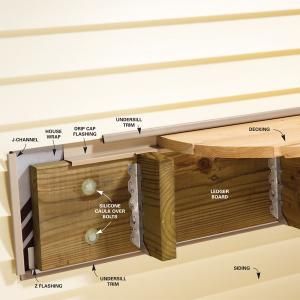When the siding becomes damaged there s a higher risk of the water running into your walls which could lead to mold growth structural damage and a compromised foundation.
Water leaking behind siding.
Bottom to top rain will hit the roof and make its way down your siding until it hits the ground.
In most communities building codes require a moisture barrier.
Step 2 you can also check above the window or door to see how the siding is attached there.
If your gutters are not directing the water to the downspout system the siding takes the brunt of the torrent resulting in wear and tear as well as water damage.
Rainwater leaking from a gutter ends up behind siding and causes a wall to rot.
Vinyl siding is designed as an exterior cladding only and is supposed to be installed over other materials such as a weather resistant barrier.
If it was installed properly there shouldn t be any water running behind the siding and causing issues.
As gravity takes over and pushes the rainfall downwards you better hope your siding was installed correctly.
At some point in the past an owner had vinyl siding installed over old siding.
My photo above of ice below some courses of vinyl siding traces a moisture problem traced to improper installation of a through wall vent for a direct vent heating appliance.
If there are gaps and water can get in you can use tri polymer caulking to fill it in.
During a very heavy 2 days of rain water began running from between pieces of siding.
While gaps and openings permit leaks behind the siding some siding openings are normal such as aluminum or vinyl siding bottom edge vents.
In this video this old house general contractor tom silva shows how to prevent water from leaking in behind vinyl siding.
The presence of a housewrap on modern buildings or felt on older buildings combined with proper flashing at windows doors and other openings are relied upon to keep water from entering the structure itself.
Check to be sure weep holes are open along bottom of window openings.
Preparation for siding while correct installation reduces the risk of water running behind the siding it can t completely stop it.
Caulk along the seams of the siding where it meets the window.
However it is possible for water to get behind the siding if it s not installed properly.
The extra thickness of the vinyl.
Inspect the area above the leak including both indoors and out.
Some areas were extremely heavy.
Some areas were extremely heavy while others were just a single streak.
Water leaks at soffit or eave overhang penetrations for chimneys that permits water to leak at the roof surface then pass behind the siding if the chimney is not properly flashed.




























